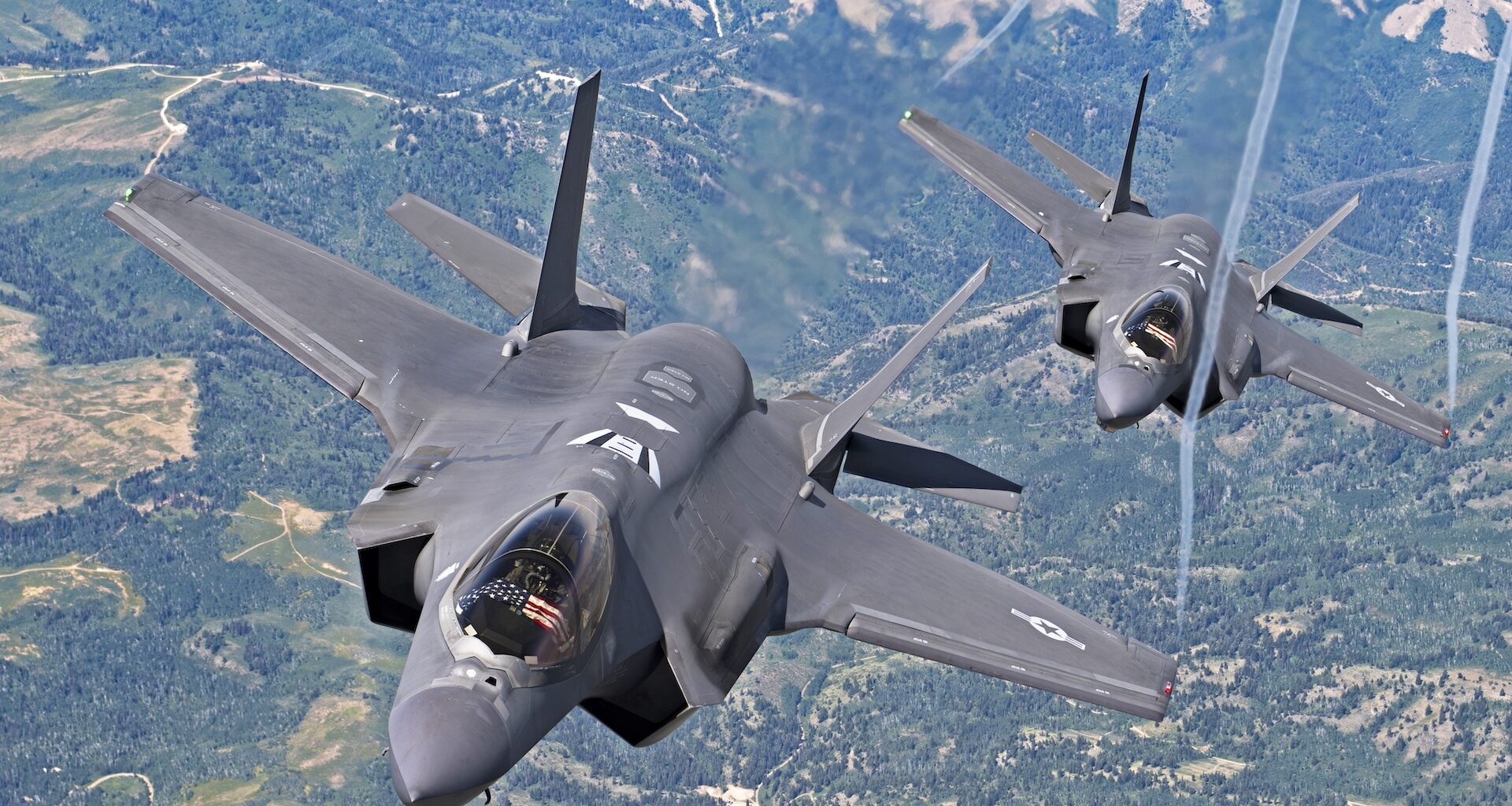The TWZ Newsletter
Weekly insights and analysis on the latest developments in military technology, strategy, and foreign policy.
Canada is still in the process of reviewing its future fighter fleet, officials have confirmed. However, with a firm commitment to buy 16 F-35As, it’s looking increasingly difficult to make the case for Ottawa switching to a different manufacturer to complete the full replacement of its aging CF-18 Hornets. Canada currently has around 75 CF-18A/B+ jets and has also added 18 former Royal Australian Air Force (RAAF) F/A-18A/Bs, plus seven more as spares, to help bolster its fleet.
Speaking in front of a House of Commons accounts committee yesterday, Canada’s Deputy Minister of Defense Stefani Beck said that it was “full steam ahead” for the country’s F-35 program.
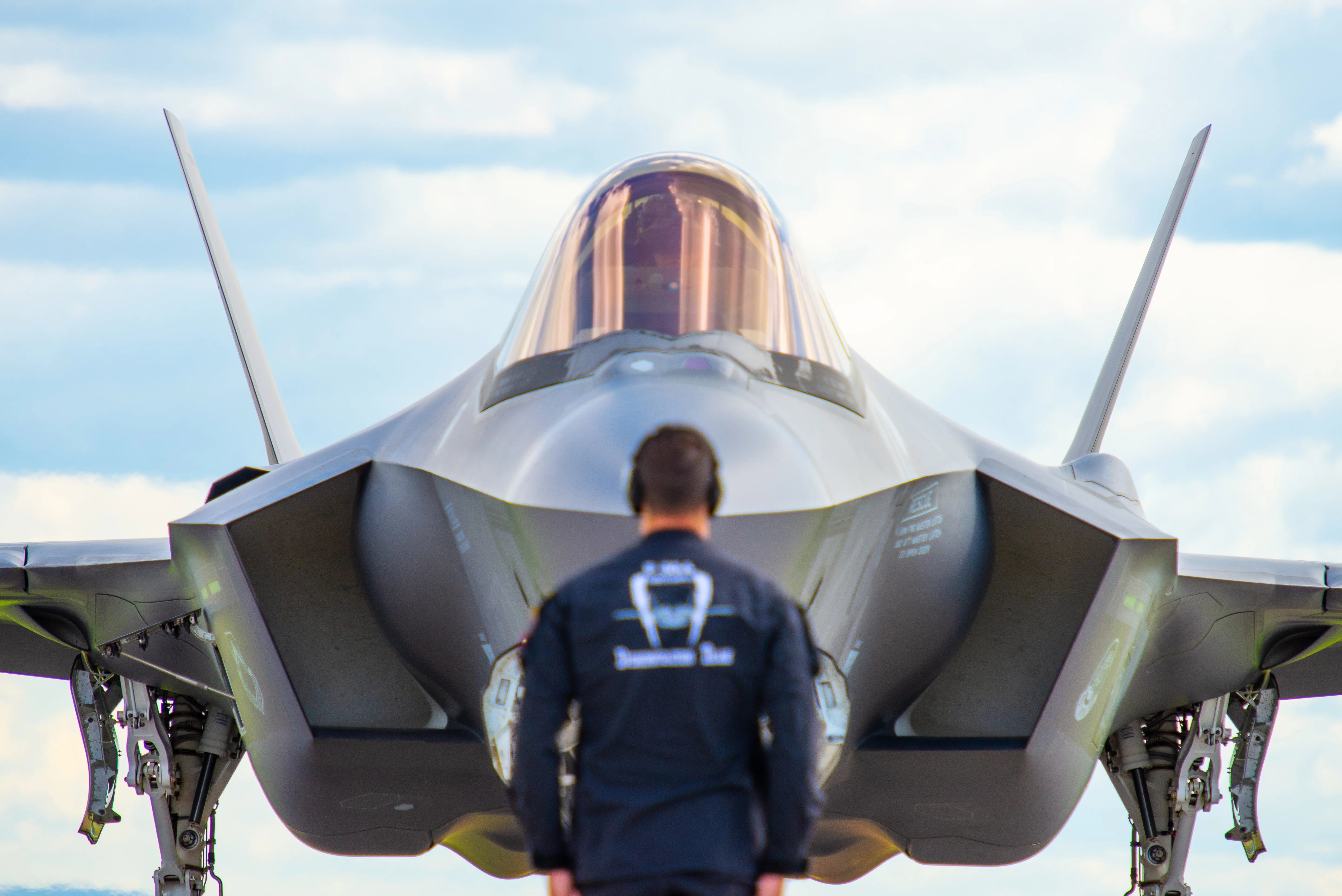 An F-35A from the U.S. Air Force Lightning II Demonstration Team prepares to launch during the Bagotville International Air Show in Quebec, Canada, June 22, 2019. U.S. Air Force/Staff Sgt. Jensen Stidham
An F-35A from the U.S. Air Force Lightning II Demonstration Team prepares to launch during the Bagotville International Air Show in Quebec, Canada, June 22, 2019. U.S. Air Force/Staff Sgt. Jensen Stidham
“What we have as direction is to continue with the contract… with the arrangements that we have in place until we hear otherwise,” Beck told lawmakers. She added that the Canadian Ministry of Defense was “focused on making sure we’ve got the infrastructure, the pilots, the training in place for the arrival of those F-35s.”
That makes sense, considering that Canada has already committed to buying 16 F-35s. Of these, four have already been paid for in full, while parts for eight others have also been purchased. The first Canadian F-35s are expected to be delivered for training at Luke Air Force Base, Arizona, next year.
Importantly, however, as Beck referred to, the government is still keeping its options open for what comes after those 16 jets.
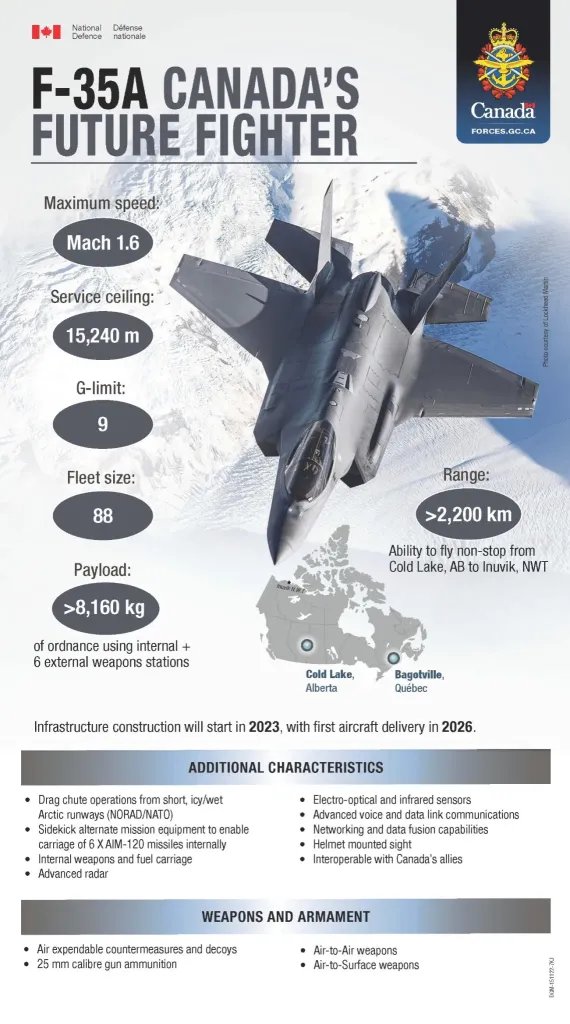 Infographic outlining the key features of Canada’s future F-35As. RCAF
Infographic outlining the key features of Canada’s future F-35As. RCAF
Back in 2023, Canada’s Liberal government announced plans to buy 88 F-35s, a decision that appeared to bring closure to what had already been a very protracted process. You can read about this here.
The first F-35s were planned to arrive in Canada in 2028, with full operational capability to be achieved in 2032–34.
However, amid growing trade tensions with the United States, Liberal Prime Minister Mark Carney launched a review of the acquisition program shortly after taking office in the spring of this year, with a deadline for the decision on that due in the late summer of this year.
 Prime Minister of Canada Mark Carney speaks to the press during the NATO summit on June 25, 2025, in The Hague, Netherlands. Photo by Pierre Crom/Getty Images Pierre Crom
Prime Minister of Canada Mark Carney speaks to the press during the NATO summit on June 25, 2025, in The Hague, Netherlands. Photo by Pierre Crom/Getty Images Pierre Crom
As it stands, Canada-U.S. relations are at a low.
Yesterday, with Carney visiting Washington, U.S. President Donald Trump said the United States and Canada have “natural conflict” on trade. For his part, Carney is under considerable pressure domestically to reach an agreement on lower tariffs.
This is all part of the fallout from events in August, when Trump increased tariffs on many Canadian goods to 35 percent, with Canada then retaliating with its own tariffs on U.S. exports.
President Trump and I know that there are areas where our nations can compete — and areas where we will be stronger together.
We’re focused on building these new opportunities. pic.twitter.com/UmlXtOCLuS
— Mark Carney (@MarkJCarney) October 7, 2025
Meanwhile, the Canadian tri-party public accounts committee that met yesterday is studying the latest auditor general’s report on the rising cost of the F-35 program.
Back in 2019, the cost of buying the planned 88 F-35s was put at $19 billion. Now it has ballooned to $27.7 billion, not including weapons and infrastructure.
Some of the additional costs are a result of changing demands from the U.S. government’s F-35 Joint Program Office (JPO). For example, the JPO has called for higher levels of security at infrastructure being built in Canada, including hangars. The infrastructure factor is a major one for the F-35 and its unique requirements that differ dramatically from the Hornet.
The RCAF will have two F-35 main operating bases, at Canadian Forces Base (CFB) Cold Lake in Alberta, and CFB Bagotville in Quebec.
The choice to be made is whether to stick with the 88 F-35s despite the extra costs, or to cut the order and go with a ‘split buy’ — making up the numbers by buying another fighter type.
Other aircraft that have already been offered to Canada include Saab’s Gripen E, which, together with the F-35, was the last contender in the competition. The Swedish company had offered to build the jet in Canada, in an effort to secure support for its bid.
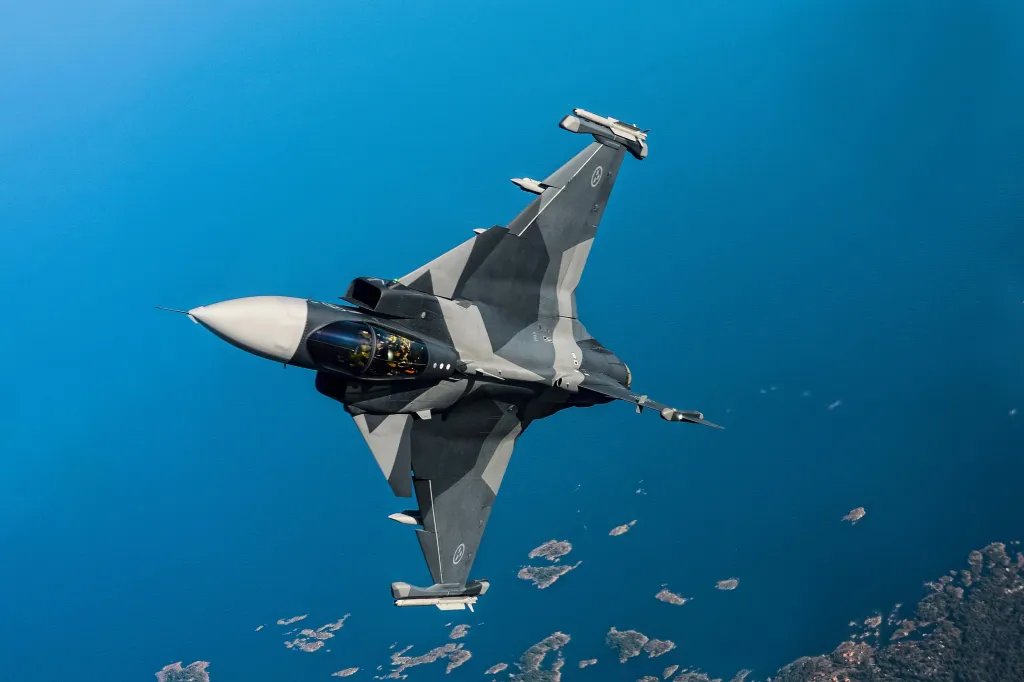 Saab Gripen E. Saab
Saab Gripen E. Saab
Two other European candidates, the Eurofighter Typhoon and the Dassault Rafale, both left the competition before it had begun, complaining that the process unfairly favored U.S. companies.
For a while, there had also been plans to buy a smaller number of F/A-18E/F Super Hornets as “interim” fighter jets, instead of the F-35. However, an earlier trade dispute between the Canadian government and Boeing led to the F/A-18E/F being kicked out of the competition in 2021.
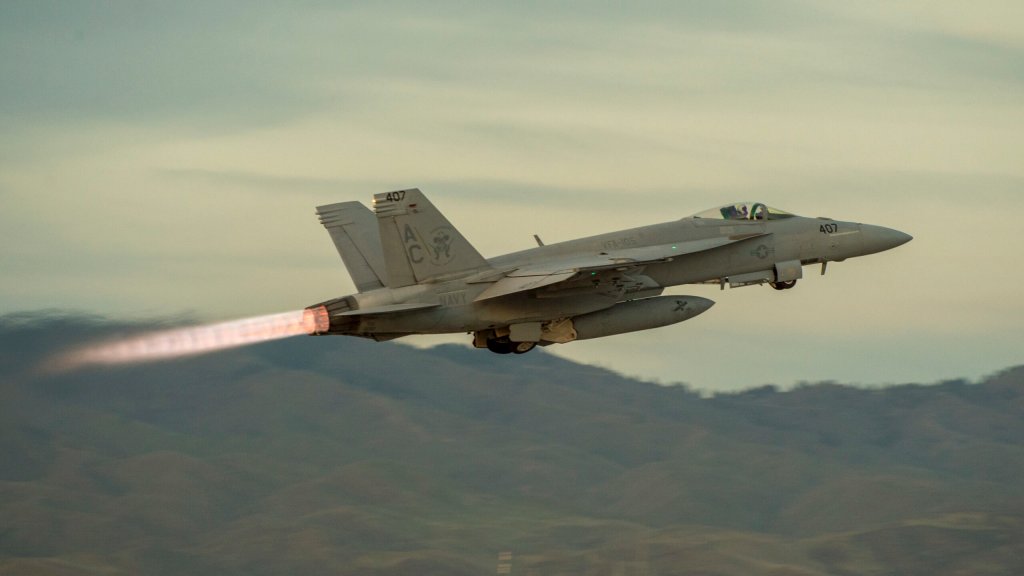 A U.S. Navy F/A-18E takes off from Gowen Field, Boise, Idaho, April 25, 2019, during a joint training exercise with the Idaho Air National Guard. U.S. Air National Guard photo by Ryan White A VFA-105 ‘Gunslingers’ F/A-18E takes off on a training sortie. (U.S. Air National Guard photo by Ryan White)
A U.S. Navy F/A-18E takes off from Gowen Field, Boise, Idaho, April 25, 2019, during a joint training exercise with the Idaho Air National Guard. U.S. Air National Guard photo by Ryan White A VFA-105 ‘Gunslingers’ F/A-18E takes off on a training sortie. (U.S. Air National Guard photo by Ryan White)
Bill Blair, who was the defense minister when the review of the F-35 buy was launched in March, suggested some advantages of a mixed fleet, saying it would give the RCAF more options to handle different types of threats.
“What happens if you have to persist in that space for months and months and years? The tool that you use, is it the right tool to do that job?” Blair said. “We need to have a whole wide range of capability sets to deal with all the eventualities that we could face.”
Pushing forward with the full F-35 buy has the support of Conservatives sitting on the accounts committee.
Meanwhile, the U.S. Ambassador to Canada, Pete Hoekstra, has pushed back on the idea of a mixed RCAF fighter fleet, saying that it will make interoperability with North American Aerospace Defense Command (NORAD) more difficult if Ottawa were to buy a European combat jet.
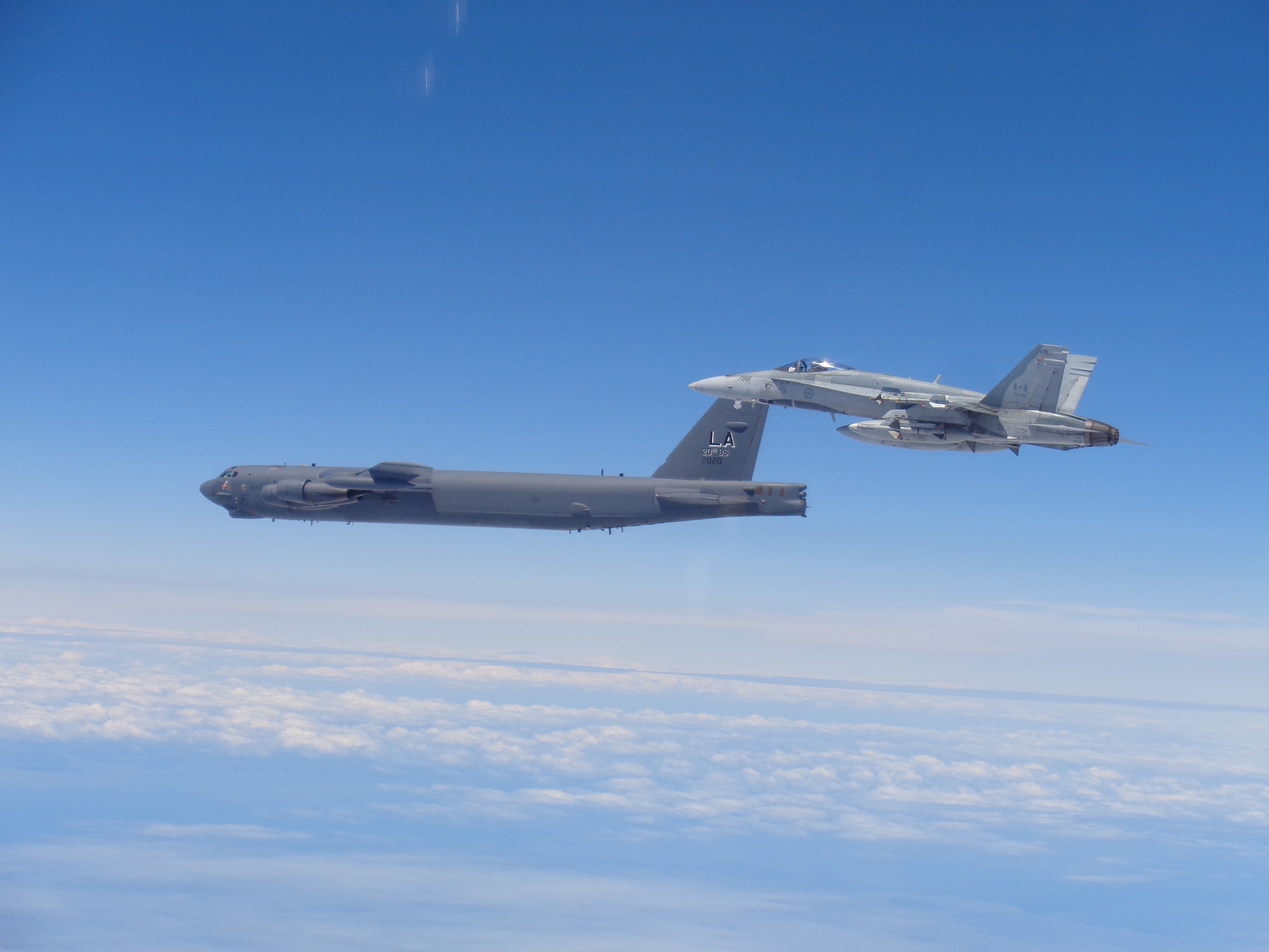 A Canadian NORAD Region CF-18 Hornet practices intercept and escort procedures alongside a U.S. Air Force B-52H bomber during Exercise VIGILANT SHIELD 17-1, June 15-16, 2017. USAF
A Canadian NORAD Region CF-18 Hornet practices intercept and escort procedures alongside a U.S. Air Force B-52H bomber during Exercise VIGILANT SHIELD 17-1, June 15-16, 2017. USAF
For their part, senior Royal Canadian Air Force (RCAF) officers have been more circumspect, cognizant of the fact that the future of the fighter fleet lies with the government’s forthcoming decision.
When asked about the challenges of operating a mixed fighter fleet, the RCAF’s commander, Lt. Gen. Jamie Speiser-Blanchet, noted that the force would have to do this anyway, with the CF-18 remaining in use until the early 2030s, while the F-35 is in the process of being introduced.
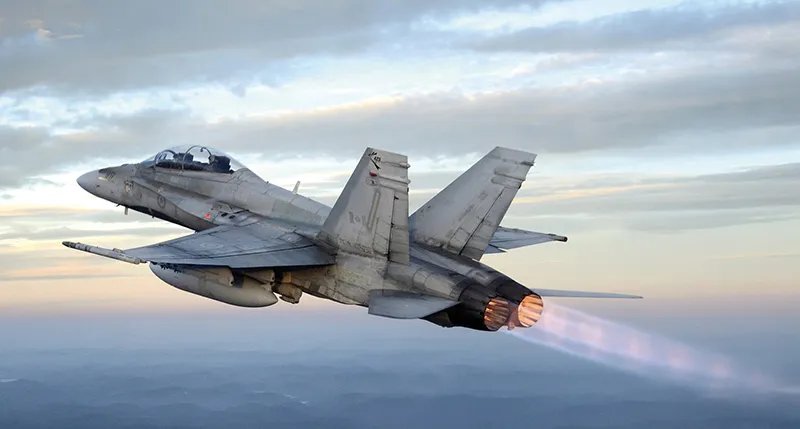 A CFB Bagotville-based CF-18B Hornet. RCAF
A CFB Bagotville-based CF-18B Hornet. RCAF
However, she did say that a mixed fighter fleet, longer term, would bring additional costs and complexities.
“It would duplicate a certain amount of infrastructure and training,” she explained.
Perhaps more significantly, Speiser-Blanchet pointed to the growing threat provided by Russia and China, Canada’s two main adversaries, both of which now operate fleets of fifth-generation fighters (although Russia’s is notably smaller).
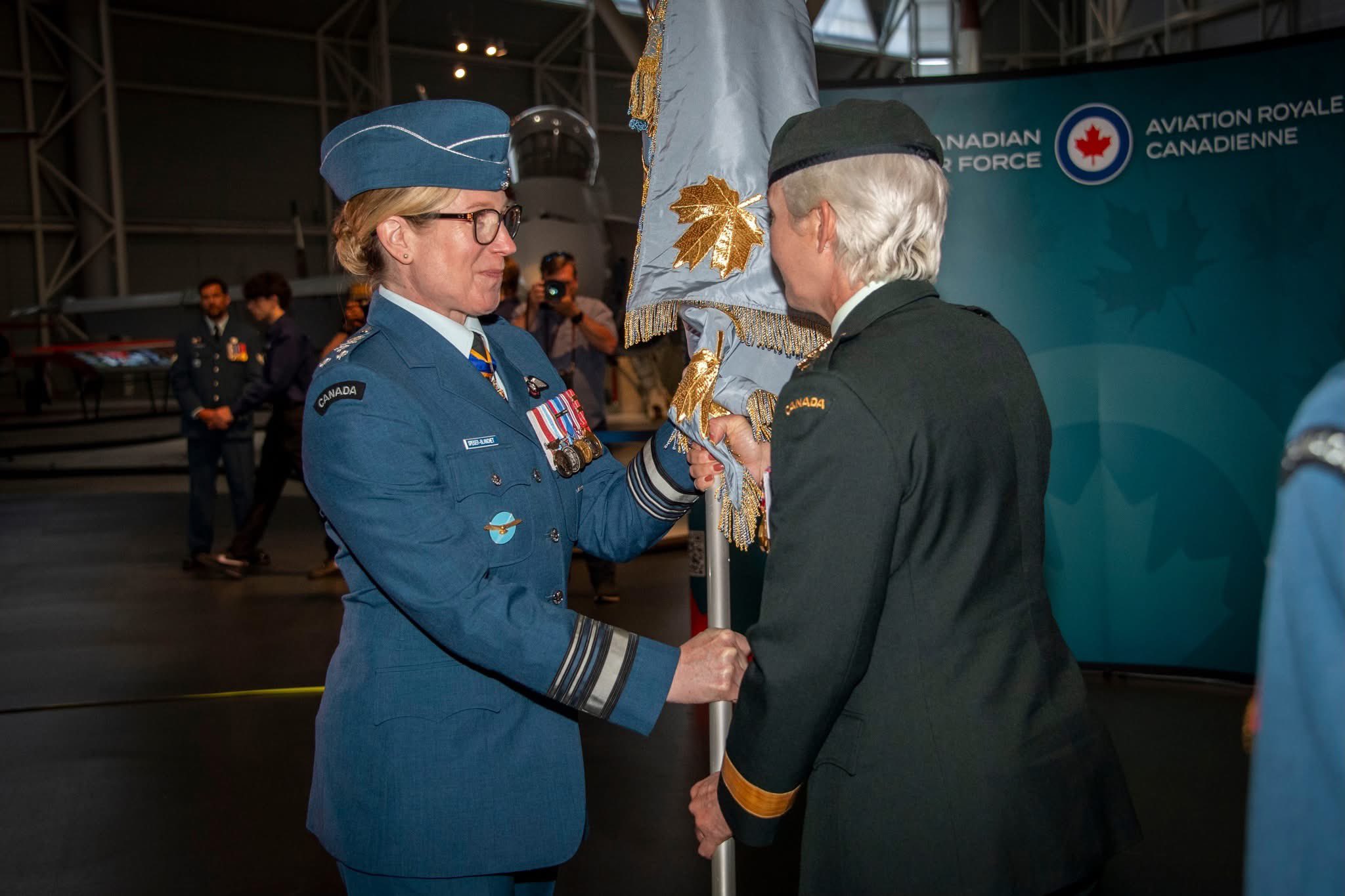 Lt. Gen. Jamie Speiser-Blanchet assumed command of the Royal Canadian Air Force during a change of command ceremony in July of this year. RCAF
Lt. Gen. Jamie Speiser-Blanchet assumed command of the Royal Canadian Air Force during a change of command ceremony in July of this year. RCAF
As it stands, the only realistic options to bulk out a potential RCAF mixed fighter fleet that also includes F-35s are fourth-generation or so-called ‘generation 4.5 fighters.’
“Both China and Russia have fifth-generation fighter aircraft and fifth-generation missiles that are able to go at much greater speeds and with much more that are holding Western allies at risk at this moment in time,” the RCAF boss said. Concerns around the expanding performance, and especially the long range, of adversary missiles, are something TWZ has discussed on many occasions in the past.
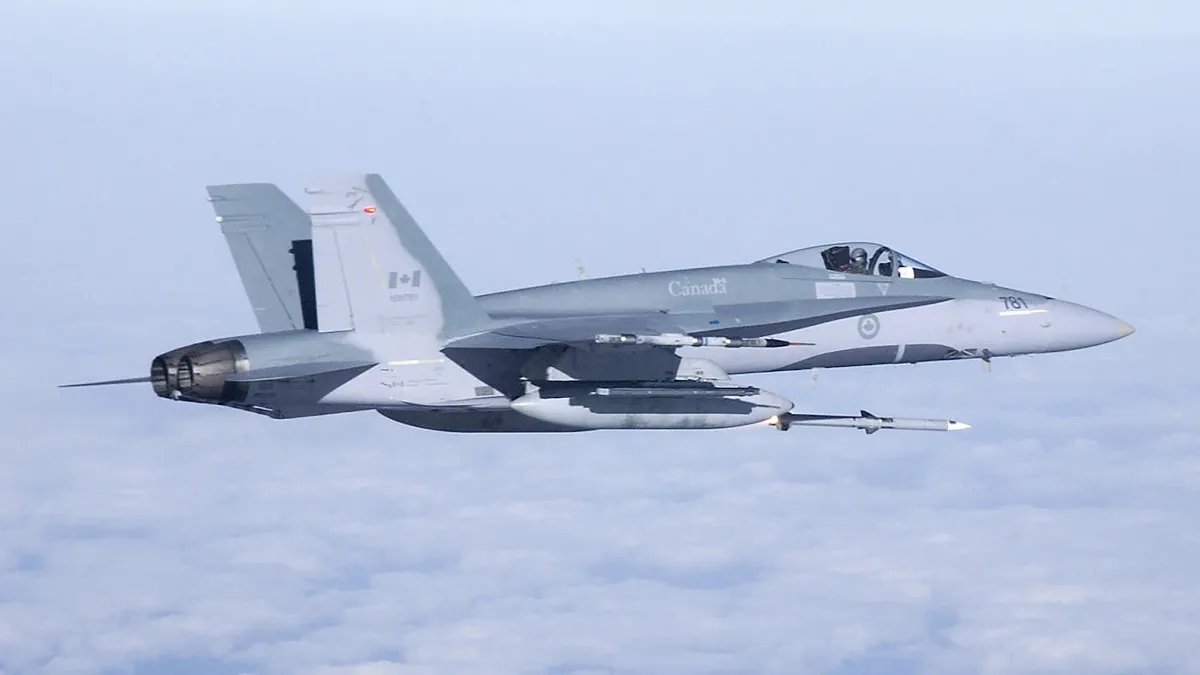 An RCAF CF-18A+ Hornet fires an AIM-120C AMRAAM. RCAF
An RCAF CF-18A+ Hornet fires an AIM-120C AMRAAM. RCAF
Interviewed earlier this week, Stephen Fuhr, Canada’s secretary of state for defense procurement, appeared to state that the country wasn’t trying to move away from the F-35.
“I don’t think that’s the direction we’re heading,” Fuhr said in an interview with CBC. “But there’ll be a decision, and we’ll make it when we’re ready.”
Subsequently, a spokesperson for Fuhr clarified that he was referring to the future of the 16 jets under contract, not the entire fleet.
“Canada is contractually obligated to 16 aircraft, which are in various stages of production with the manufacturer. A decision on the full program is currently under review,” the spokesperson said.
Once again, this confirmed that the future of the 88-aircraft F-35 buy wasn’t secure.
The problem for anyone backing the idea of a mixed fighter fleet is that the longer the decision on that is delayed, the harder it will be.
As mentioned before, Canada is already paying for at least some F-35s and is due to get its hands on its first aircraft next year. Infrastructure programs may be running over budget and behind schedule, but they have also consumed considerable funds. Then there is the fact that Canada’s industry also has a significant degree of involvement in the Joint Strike Fighter program.
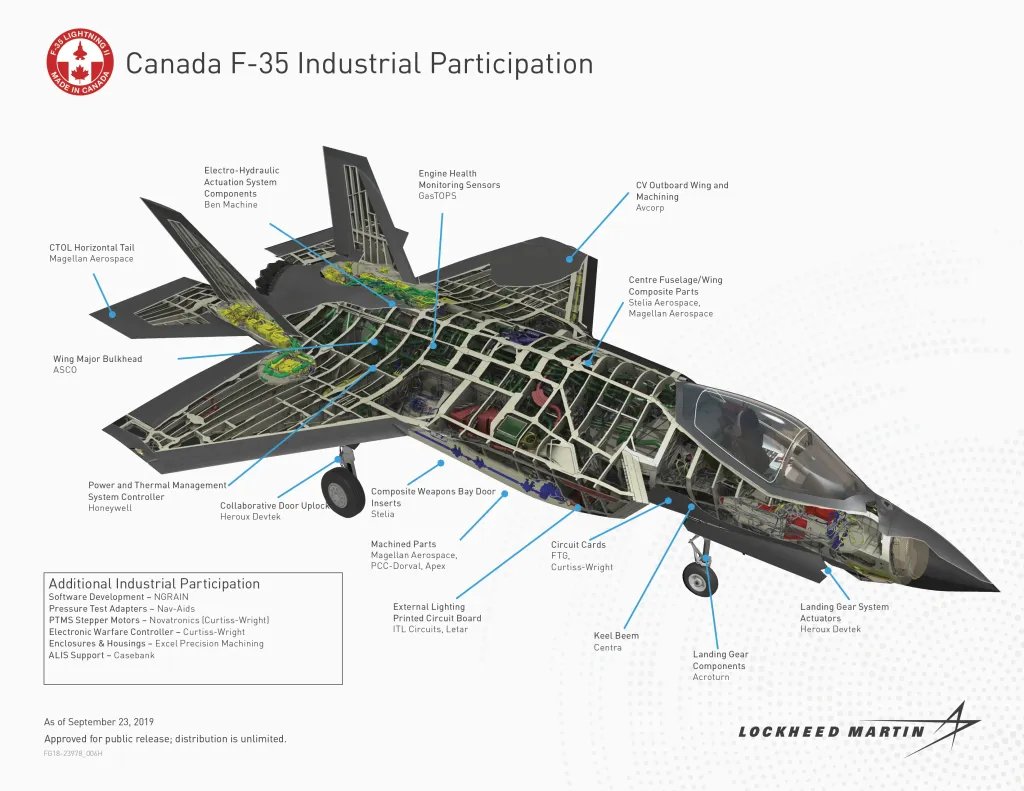 An infographic showing Canadian industrial participation in the F-35 program. Lockheed Martin
An infographic showing Canadian industrial participation in the F-35 program. Lockheed Martin
In some cases, there could be cost-benefit arguments in having a mixed fighter fleet, as well as the important factor of not relying entirely upon one source of this type of combat equipment.
But as Canada and the RCAF become more deeply intertwined with the F-35, the arguments for buying some kind of alternative fighter to bulk out the fleet — in a cost-efficient way — become increasingly hard to justify.
Contact the author: thomas@thewarzone.com
Thomas is a defense writer and editor with over 20 years of experience covering military aerospace topics and conflicts. He’s written a number of books, edited many more, and has contributed to many of the world’s leading aviation publications. Before joining The War Zone in 2020, he was the editor of AirForces Monthly.

